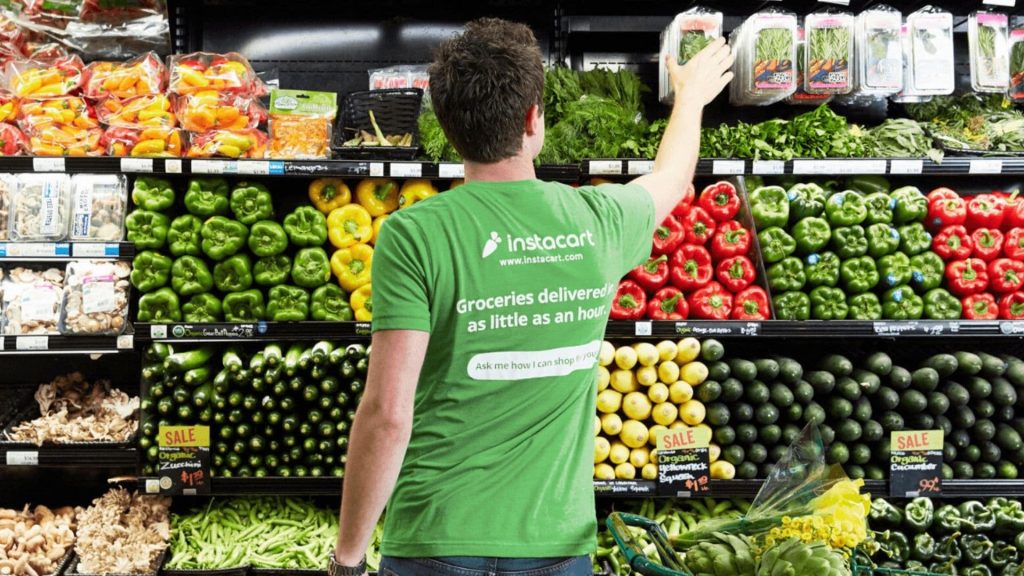
Instacart taxes can feel overwhelming, especially if you’re new to gig work or juggling multiple side hustles. In this guide to Instacart taxes, we’ll cover everything you need to know about filing as an Instacart shopper in 2025, including which tax forms you’ll need, how to handle self-employment tax, what deductions you can claim, and how to avoid common mistakes. Whether you’re a full-service shopper delivering groceries or an in-store employee, understanding Instacart taxes is crucial for keeping your finances in check and maximizing your take-home pay. From 1099-NEC forms to quarterly estimated payments and smart deduction strategies, we’ll help you navigate the world of Instacart taxes with confidence and maybe even a smile.
Instacart Shopper Tax Basics
Instacart shoppers fall into two main categories, and your tax situation depends on which one you are:
- In-Store Shoppers: You’re classified as an employee. Instacart withholds taxes from your paychecks and sends you a W-2 at the end of the year. Filing is similar to any traditional job—just report your W-2 income on your tax return.
- Full-Service Shoppers: You’re an independent contractor. Instacart does not withhold taxes, so you’re responsible for reporting your income, paying self-employment tax, and making quarterly estimated payments if you expect to owe $1,000 or more for the year.
Key Tax Forms for Instacart Shoppers
- 1099-NEC: If you earn $600 or more, Instacart sends this form by January 31, showing your total income (including tips). The IRS gets a copy too, so don’t skip reporting it.
- W-2: Only for in-store shoppers, showing wages and taxes withheld.
- Schedule C: Used by independent contractors to report business income and expenses. This is where you’ll list your Instacart earnings and all your deductions.
- Schedule SE: Calculates your self-employment tax (Social Security and Medicare), which is 15.3% of your net earnings.
- Form 1040: The main individual tax return everyone files.
- Form 1040-ES: For making quarterly estimated tax payments if you expect to owe $1,000 or more.

Self-Employment Tax and Quarterly Payments
Full-service Instacart shoppers are responsible for both the employer and employee portions of Social Security and Medicare taxes, totaling 15.3% of net earnings. If you expect to owe $1,000 or more in taxes, the IRS requires you to make quarterly estimated payments—due April 15, June 15, September 15, and January 15 of the following year. Missing these deadlines can result in penalties, so mark your calendar!
Federal, State, and Local Taxes
- Federal Taxes: You pay income tax based on your total taxable income, following the IRS tax brackets.
- State Taxes: Most states require income tax payments too, with varying rates and rules. If you deliver in multiple states, you may need to file non-resident returns.
- Local Taxes: Some cities or counties have additional taxes, so check your local requirements.
Instacart Tax Deductions: Maximize Your Savings
One of the biggest perks of being self-employed is the ability to deduct business expenses, which lowers your taxable income. Here are the most common Instacart tax deductions:
- Vehicle Expenses: Deduct either the standard mileage rate (70¢ per mile for 2025) or actual expenses like gas, repairs, insurance, and depreciation. Most shoppers find the standard mileage deduction easier and more lucrative.
- Phone and Technology: Deduct a portion of your phone bill, data plan, and accessories used for work (usually 50-70%).
- Delivery Equipment: Insulated bags, coolers, phone mounts, chargers, and other delivery supplies are all deductible.
- Home Office Supplies: If you use a dedicated space for Instacart work, you may be able to deduct a portion of your home expenses.
- Other Expenses: Parking, tolls, health insurance premiums, and platform fees can also be deducted.
Always keep detailed records and receipts—using apps or spreadsheets can make tracking much easier and help you avoid missing out on deductions.

How to File Instacart Taxes?
- Gather Your Forms: Collect your 1099-NEC or W-2, plus records of all expenses and mileage.
- Complete Your Tax Forms: Use tax software or a professional to fill out Form 1040, Schedule C, and Schedule SE. Include all deductions to reduce your taxable profit.
- Pay Any Taxes Owed: If you haven’t made quarterly payments, be prepared to pay your full tax bill by April 15. Set aside 25-30% of your Instacart income for taxes throughout the year to avoid surprises.
- File On Time: The annual tax deadline is April 15. If you need more time, request an extension using IRS Form 4868.
Common Instacart Tax Mistakes to Avoid
- Not reporting all income (even under $600—you still need to file it).
- Forgetting to track and deduct eligible expenses.
- Missing quarterly estimated payments and incurring penalties.
- Mixing personal and business expenses (keep them separate!).
- Ignoring state and local tax obligations.
FAQs
Do I have to pay taxes on Instacart earnings?
Yes, all Instacart income is taxable, whether you receive a 1099-NEC or not.
Will Instacart send me a 1099 or W-2?
You’ll get a 1099-NEC if you’re a full-service shopper and earned $600+; in-store shoppers receive a W-2.
How much should I set aside for taxes?
Set aside 25-30% of your Instacart earnings to cover federal, state, and self-employment taxes.
What’s the best way to track mileage and expenses?
Use a mileage tracking app or spreadsheet and save all receipts for business-related purchases.